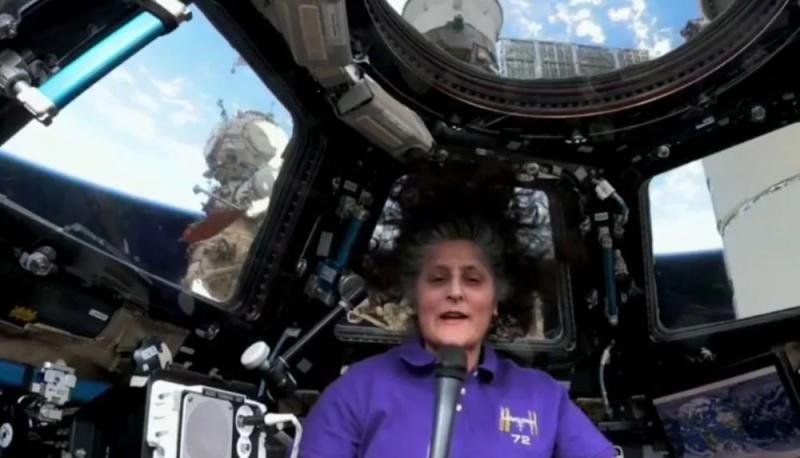
- galaxy
- 04 Nov 2024 06:28 AM
- International Space Station, Sunita Williams, NASA missions
For astronauts aboard the International Space Station (ISS), the beauty of sunrise and sunset is not a once-a-day event; instead, they experience this breathtaking spectacle up to 16 times in a single Earth day. NASA astronaut Sunita Williams, currently on the ISS, knows this phenomenon well. During a 2013 event at the University of Gujarat, she reflected on her unique experience of witnessing 16 sunrises and sunsets while orbiting the Earth in a fast-moving shuttle.
Due to delays in the Boeing Starliner spacecraft's return schedule, Ms. Williams' current mission has been extended, allowing her to stay in orbit until February 2025. Alongside fellow astronaut Butch Wilmore, she is leveraging this time to contribute to crucial research and to enjoy the extraordinary experience of multiple sunrises and sunsets.
The Science Behind Multiple Sunrises and Sunsets
The ISS orbits Earth at a staggering speed of approximately 28,000 km per hour, completing a full orbit every 90 minutes. This rapid pace means that astronauts on the ISS transition from the dark side of the Earth to the sunlit side—and back—every 45 minutes. Thus, they can witness a sunrise or sunset nearly every 45 minutes, a sight that few on Earth ever get to see more than twice a day.
Day-Night Cycle in Space
In stark contrast to the typical 12-hour light and dark cycle experienced on Earth, astronauts on the ISS go through a cycle of 45 minutes of daylight followed by 45 minutes of darkness continuously throughout their day. This rapid shift creates a unique rhythm of day and night, occurring 16 times in a single Earth day.
How Astronauts Mark Time in Space
On the ISS, traditional concepts of day and night lose their relevance. With the station orbiting the planet every 90 minutes, astronauts adhere to Coordinated Universal Time (UTC) to structure their daily activities. Their routines are meticulously organized, with work, meals, and rest scheduled in five-minute intervals, essential for maintaining physical and mental well-being in such an unearthly environment.
To keep in sync with teams on Earth, astronauts utilize atomic clocks, which provide precise timekeeping necessary for navigation and operations, especially for missions that venture beyond Earth’s orbit.





































